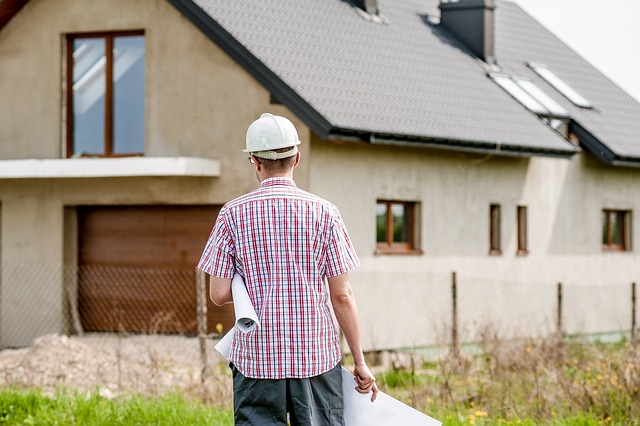Home Repair and Maintenance play a significant role in maintaining a residence's energy efficiency and structural integrity, particularly through careful window assessment and potential replacement. The U.S. Department of Energy indicates that windows can account for one-fourth to one-third of heating and cooling loss, highlighting the importance of their thermal performance. Homeowners should inspect their windows regularly for signs of wear or inefficiency and consider upgrading to energy-efficient options that include advanced materials like vinyl or fiberglass frames and features such as double or triple-pane glass with argon gas fills and low-E coatings. These improvements not only enhance comfort but also conserve energy, potentially reducing utility bills. It is recommended to consult professionals for personalized window recommendations tailored to local climate conditions. Proper installation by experts is key to achieving the best energy performance from new windows, ensuring they fit without drafts and are sealed airtight with insulating shims to prevent heat loss. Weather stripping or caulk is applied to further minimize air leakage, and flashing is used to protect against moisture damage. This comprehensive approach to window replacement as part of Home Repair and Maintenance not only boosts home comfort but also significantly contributes to energy savings and the longevity of your property.
Considering window replacement and installation for enhanced home efficiency? This article guides you through the essentials of evaluating your windows’ condition, selecting the optimal replacements, and executing a professional installation to optimize your home’s repair and maintenance. Dive into the nuances of each step for a more comfortable and energy-efficient living space.
- Assessing the Need for Window Replacement in Home Repair and Maintenance
- The Process of Selecting the Right Windows for Your Home
- Step-by-Step Guide to Professional Window Installation and Its Impact on Home Efficiency
Assessing the Need for Window Replacement in Home Repair and Maintenance

When considering home repair and maintenance, window replacement emerges as a critical decision that can enhance energy efficiency, improve aesthetic appeal, and ensure structural integrity. Homeowners should regularly inspect their windows for signs of wear, condensation between panes, drafts, or difficulty in operation, which may indicate the need for repair or full replacement. The U.S. Department of Energy highlights that as much as 25-30% of a home’s heating and cooling energy can be lost through windows. Therefore, assessing the thermal performance and overall condition of windows is essential for maintaining a comfortable living environment while optimizing energy use. Additionally, advancements in window technology have led to a variety of energy-efficient options that can significantly reduce heating and cooling costs over time.
Factors such as frame material, glazing, coatings, and the window’s orientation should be considered when evaluating window performance. For instance, vinyl or fiberglass frames often provide better insulation than wood or aluminum. Double or triple-pane glass, argon gas fills, and low-emissivity (low-E) coatings can further enhance energy efficiency. During the assessment process, it’s advisable to consult with a professional who can perform a detailed analysis of your home’s current window setup and recommend the most suitable replacement options based on your specific needs and local climate conditions. Regular maintenance and prompt replacement when necessary are key components of effective home repair and maintenance strategies, ensuring that windows serve their purpose for many years.
The Process of Selecting the Right Windows for Your Home

When considering home repair and maintenance, window replacement is a significant decision that can enhance energy efficiency, aesthetics, and overall home comfort. Selecting the right windows for your home involves a thoughtful process that aligns with your specific needs, preferences, and budget. Homeowners should begin by assessing their current windows to understand the scope of the project. This includes noting any issues such as drafts, condensation between panes, or difficulty in operation. Understanding the climate and local weather patterns is also crucial, as this will inform the type of window materials and glazing that would be most effective in insulating your home.
Energy-efficient windows can significantly reduce heating and cooling costs, making them a smart investment within the realm of home repair and maintenance. The selection process continues with determining the right style, size, and material for your windows. Options like vinyl, wood, or composite frames each come with their own set of benefits and trade-offs regarding durability, appearance, and environmental impact. Additionally, considering window features such as double or triple panes, low-emissivity coatings, argon gas fills, and proper window hardware is essential for optimizing energy performance. Professional consultations can provide valuable guidance, ensuring that the windows you choose will not only complement your home’s design but also meet your functional requirements for years to come.
Step-by-Step Guide to Professional Window Installation and Its Impact on Home Efficiency

When embarking on a window replacement project as part of your home repair and maintenance regimen, professional installation is paramount for maximizing energy efficiency and overall home performance. A step-by-step guide to this process ensures that each stage is executed with precision. The initial phase involves measuring the existing window openings accurately to select windows that fit perfectly, minimizing drafts and heat loss. Next, the old windows are carefully removed, taking care not to damage the surrounding frame or structure. Once the new windows are prepared, they are set into place with a focus on alignment and levelness, which is crucial for proper operation and sealing.
Professional installation continues with the insertion of insulating shims to create a tight seal between the window and the opening, a step that significantly contributes to home efficiency by reducing air infiltration. The windows are then secured, and their functionality is tested to ensure they open and close smoothly. Flashing is applied to divert water away from the window and building structure, protecting against moisture intrusion that could lead to wood rot or mold growth. Finally, the installation team will seal the window perimeter with weather stripping or caulk, further enhancing energy efficiency by preventing air leakage. This meticulous process not only improves the comfort of your home but also reduces heating and cooling costs, making it a smart investment in your property’s upkeep and functionality within the realm of home repair and maintenance.
windows play a pivotal role in maintaining a home’s comfort, energy efficiency, and aesthetic appeal. When it comes time to assess, select, and install new windows, the process is more than just an upgrade—it’s a strategic step in home repair and maintenance that can significantly enhance your living environment. This article has outlined the key considerations for determining if window replacement is necessary, selecting the ideal windows tailored to your home’s unique needs, and the professional steps involved in installation that contribute to heightened home efficiency. Investing in quality window solutions not only elevates your property’s value but also fosters a more sustainable and comfortable living space. Homeowners should prioritize this aspect of home repair and maintenance to reap the long-term benefits of energy savings and improved home performance.
